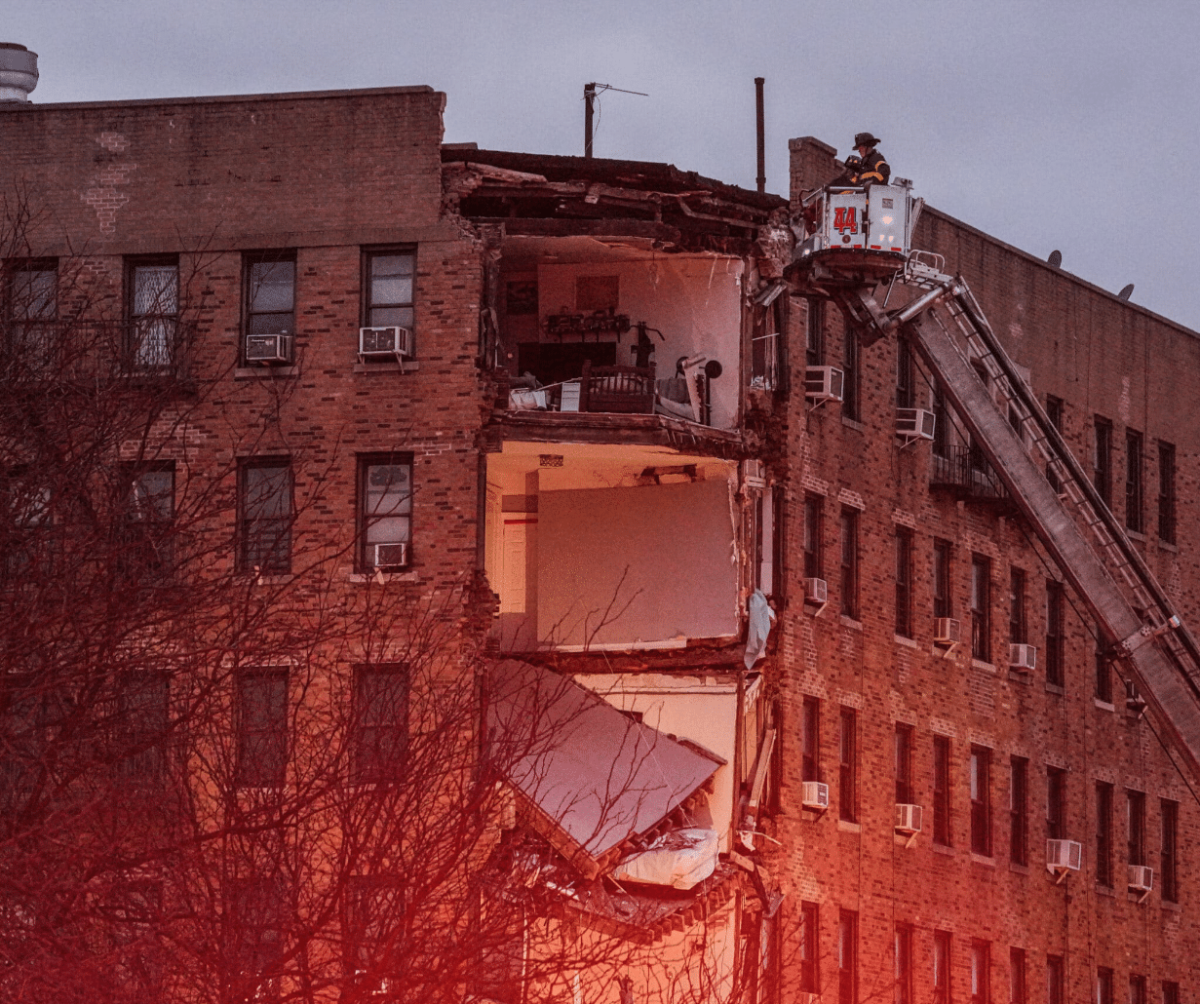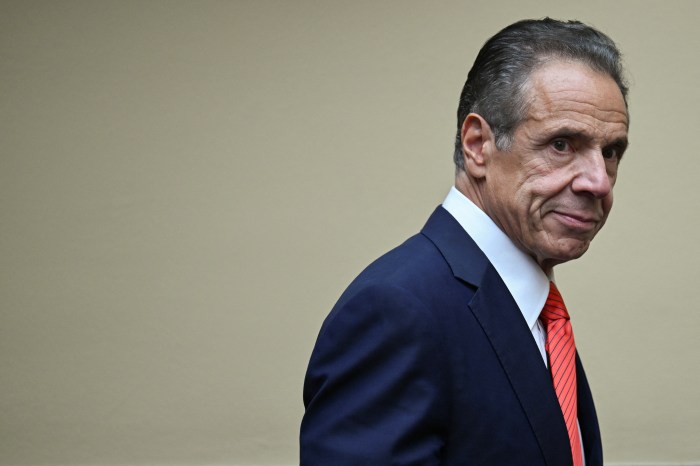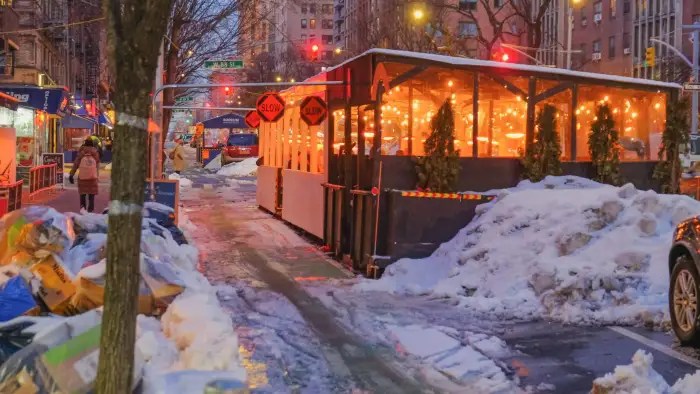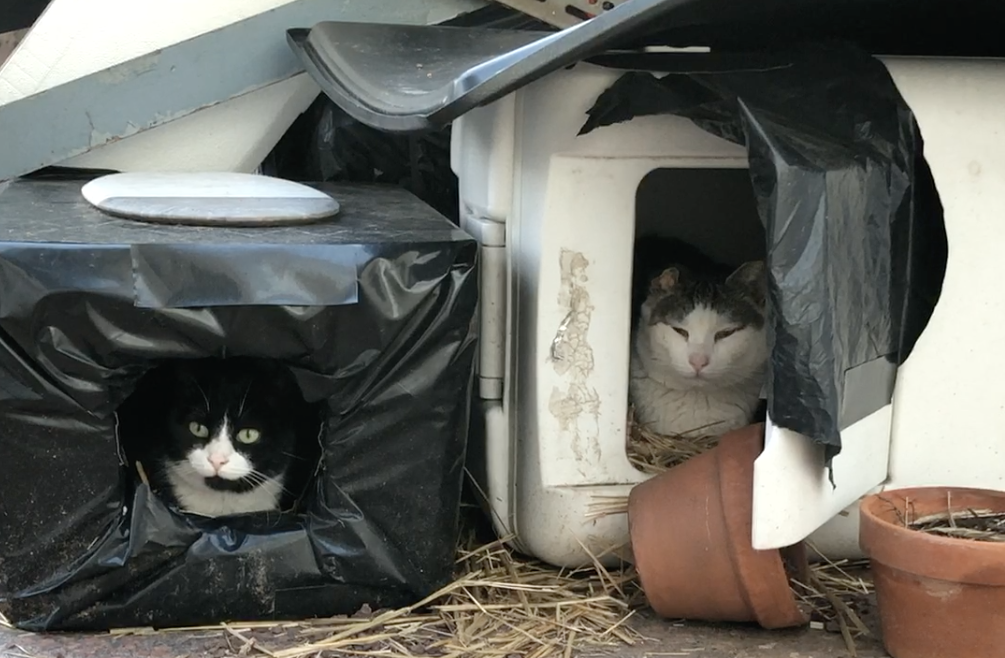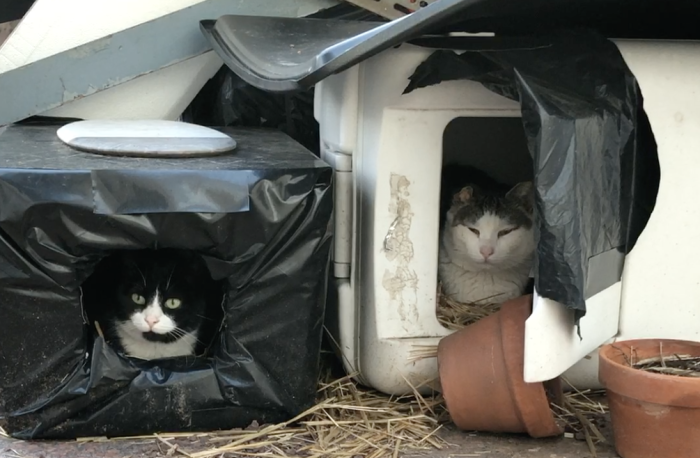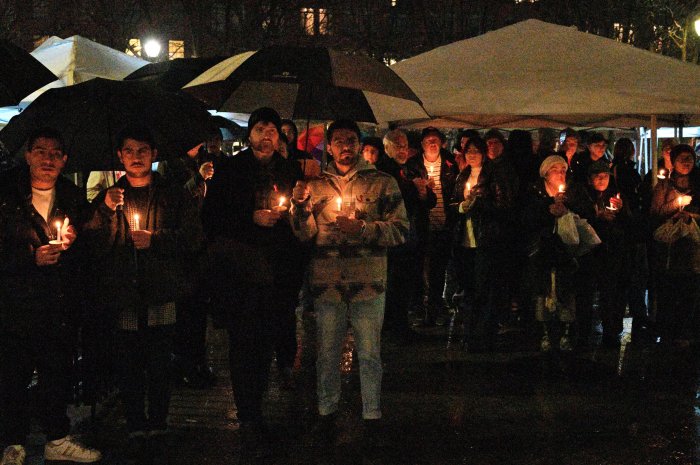
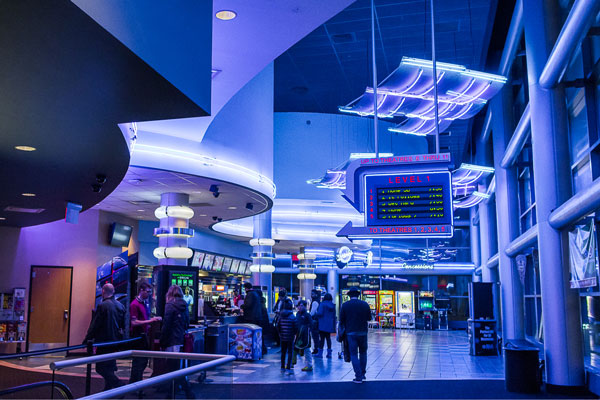
Regal Cinemas Battery Park will be central to this year’s Tribeca Film Festival, which in recent years has mostly strayed miles away from its namesake nabe. Yes, the theater is in Battery Park City, but a short walk away. The free Tribeca Family Festival street fair returns to Greenwich St. (between Chambers and Hubert Sts.) all day starting at 10 a.m. on Sat., April 25.
BY SCOTT STIFFLER (Posted April 9, 2015) | Old enough to assert itself but young enough to learn new tricks, the 14th edition of the Tribeca Film Festival is back where it started.
Here we go round again — this time with a new multi-screen venue, a sprawling events hub and prestige premieres all taking place on the West Side, below Canal St. It’s a conscious effort to reconnect with the festival’s initial purpose: make Lower Manhattan a cultural destination, and give a much-needed boost to an area struggling to recover from 9/11.
During its 2002 debut, this mission was a rousing success — but as the years went by, righteous grumblings were heard that the festival was becoming increasingly disassociated from its namesake neighborhood. That feeling was understandable, especially among ticketholders who found themselves trekking to Third Ave. and 11th St. for screenings at AMC Loews Village 7, or finding the red carpet located in Chelsea.
Still, two out of three ain’t bad in the name and deed department, considering that the Tribeca Film Festival has presented 1,600 films from more than 80 countries, attracted 4.9 million attendees, delivered an estimated $900 million into New York City’s economic coffers and distinguished itself as a destination for festival devotees and foreign tourists.
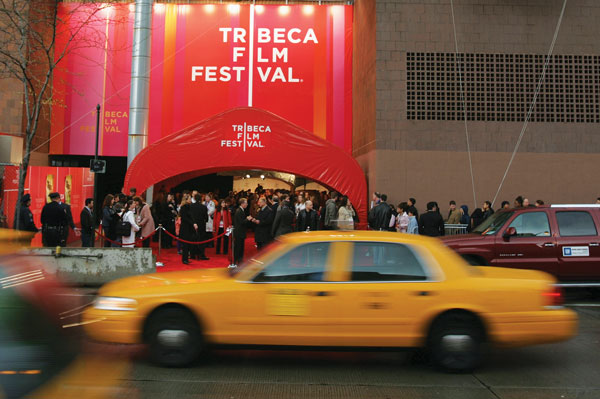
Red carpet glam can be found at every Tribeca Film Festival screening venue, April 15-26.
This year, from April 15-26, several notable changes will once again link the brand name to the physical location it invokes. The Regal Cinemas Battery Park Stadium 11 facility replaces Loews Village 7. The School of Visual Arts’ two-screen SVA Theater remains, along with the nine-screen Bow Tie Cinemas Chelsea (both are on W. 23rd St. near Eighth Ave., in eyeball distance of one another).
While the Chelsea venues will continue to host premieres, Regal will also be a place to find celebrity-infused red carpet glam. Add the return of BMCC Tribeca PAC as a screening venue and the popular free outdoor Drive-In series (right behind the Regal), and the festival is poised to offer its most downtown-centric iteration in years.
“To keep the primary players in one area was a formula that worked from the beginning,” notes festival director Genna Terranova, who connects the 2015 edition’s geographic density to a desire to “create an environment where people feel like they’re part of the event; that sensation of community — and the best way to do that, we felt, was in our own community downtown. We always wanted to centralize the festival, because of our namesake, and also because we want to bring people together.”
But you can’t do that without a hub, Terranova notes — and they’ve found one at 50 Varick St. (btw. Beach & Laight). The 150,000-square-foot Spring Studios facility will provide ample space for multimedia installations, screenings, industry discussions (“Tea Talks”) and a “live+ mobile + social media experience” that has A$AP Rocky sharing the stage with journalist Elliott Wilson for a conversation about how storytelling influenced his growth as a rap artist and style icon. That April 21 event, filmed to air on WatchLOUD.com, is indicative of the festival’s ongoing effort to reach wider audiences and embrace new platforms.
“You can walk into the space and really feel like you’re part of the festival,” says Terranova of Spring Studios, which will host the hacking conference DEFCON. Its founder, Dark Tangent, will be on hand to launch their April 23–25 event. “It’s all good white hat-type stuff,” Terranova assures, noting that DEFCON will allow festivalgoers to participate in hands-on hacking activities, addressing both current events and issues connected to the subject matter of festival films.
Only the very few among us who make those glasses look good will mourn the day that Virtual Reality overtakes 3D — and while the current state of technology isn’t exactly up to Star Trek holodeck standards, the Spring Studios facility has an April 24/25 event that offers a palpable glimpse into VR’s potential to radically alter moviegoing.
Taking place in a 15×15 unit, “Lost” is a 6.5-minute real-time interactive VR narrative created by the Oculus Story Studio. After being placed in a moonlit forest with an “unusual guest,” your 360° world becomes fraught with danger. Terranova says use of horror movie tropes in “Lost” is a significant leap for the VR medium, which has evolved to a point where it’s able to ask (and answer), “How do we incorporate this new technology into telling stories?”
Virtual Reality has a presence elsewhere at Spring Studios, as part of the “Storyscapes” program. Its five interactive events — which promise to inject “empathy and immersion” into the storytelling experience — include a 6,000-square-foot sensory deprivation labyrinth and the opportunity to become digital friends with life coach Karen. Her unhealthy curiosity about your personal life mirrors concerns brought up in another Storyscapes experience: “Do Not Track,” which reveals the extent to which your online activities are tracked. Additionally, the work of large-scale installation artist (and 2013 Storyscapes alum) Chris Milk will be featured, through a number of VR projects including “Evolution of Verse” and “Clouds Over Sidra.”
For audiences accustomed to simply sitting back as the film unspools and occasionally gripping their cup holders during a tense moment, Terranova says the VR wow factor “is almost as if when you first saw cinema and everyone was afraid the train was coming off the screen. There’s a new grammar, a new language being created. The technology is here — but the challenge for the next generation of storytellers is, how do we apply it? We want to give them support as they move into a different world.”



